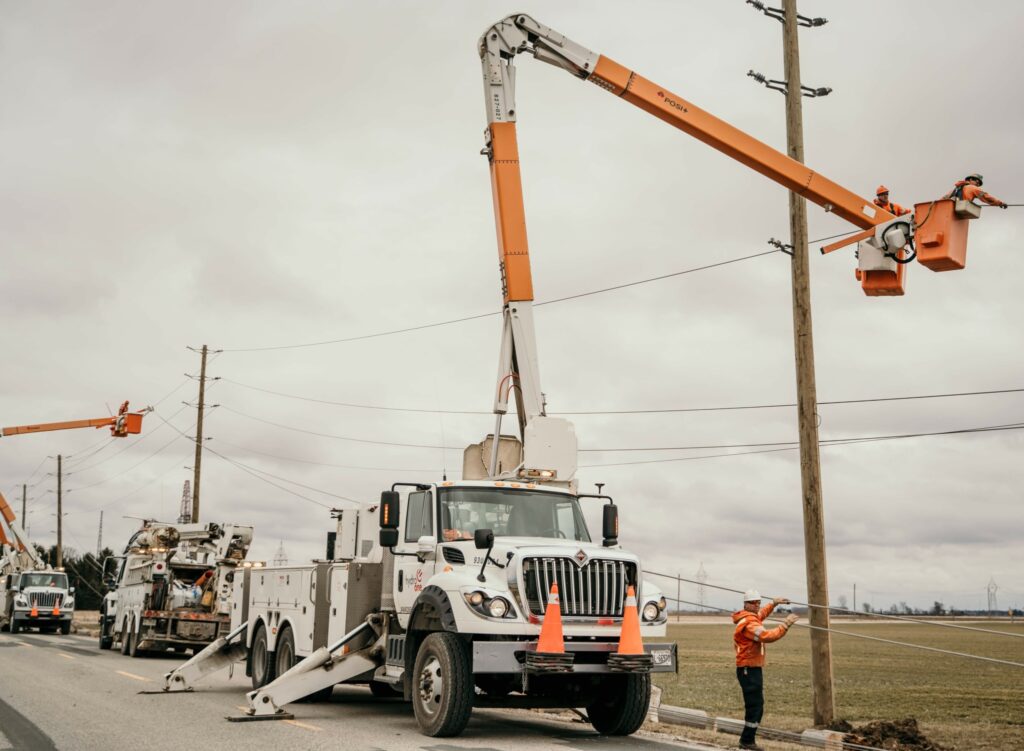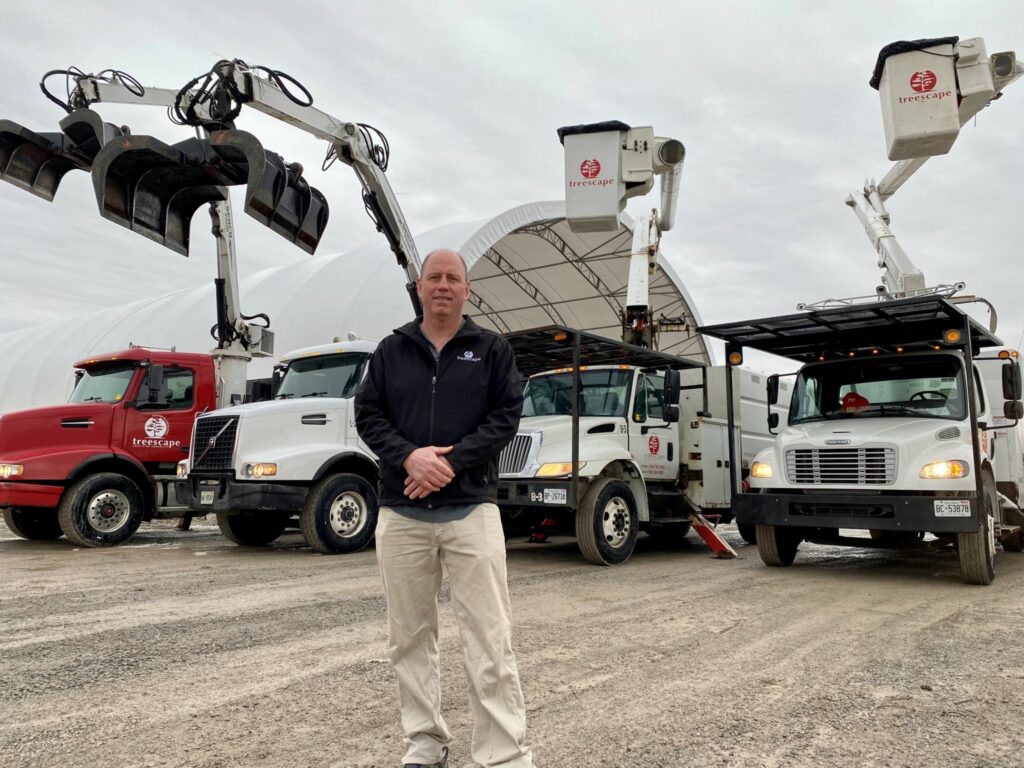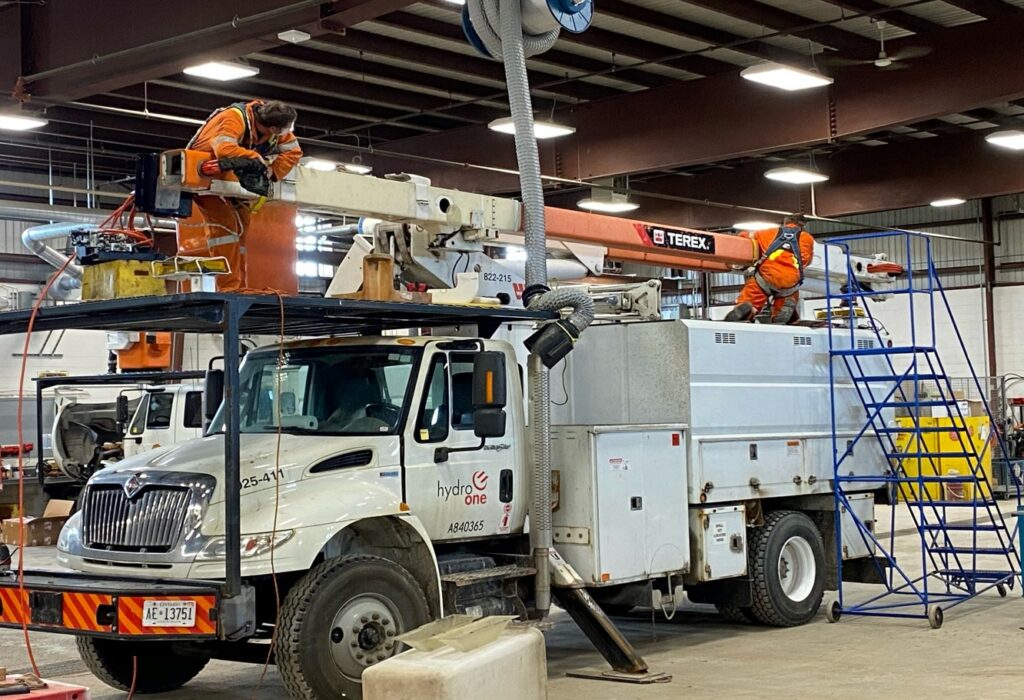Strict protocols will keep workers safe at heights
When your job takes you to great heights, falls and accidents could be your downfall. Literally. Trucks with buckets and cranes are designed to offer access far above the ground, after all.
Safety procedures, training, and some good old common sense will ensure those who use the equipment remain out of harm’s way.
Sean Hooper, an Infrastructure Health and Safety Association (IHSA) trainer who focuses on risky activities, covers some of the basics. Don’t overreach. Don’t step out of the bucket. Don’t step up on the bucket ledge. As for some of the do’s, use the truck to bring you up to the proper height to work comfortably without leaning, work within your comfort zone, and use a tool to reach out. An arborist could use a pole pruner; a powerline worker could use a hot stick.

Hydro One, Ontario’s largest electricity transmission and distribution company, says those who operate its bucket trucks or other equipment receive safety-focused training that focuses on such factors. New employees are always coupled with experienced drivers, too, while training opportunities are regularly presented to refresh existing skills.
The bucket trucks themselves include on- and off-road machinery, using an International or Freightliner chassis equipped with various lifting devices from companies such as Altec, Posi Plus, or Terex. The length or reach of a lift, or where certain pieces of equipment like bins or containers are located, can vary based on weights and needs.
Mike Crough knows a thing or two about working at heights with bucket and crane trucks as well. The arborist and president of Treescape Certified Arborists has been in business for 25 years and is proud of his company’s record of zero lost-time injuries.

His staff have safe limits of approach when it comes to primary hydro wires, and the related voltage determines how close they can get while working on trees in the area. Dielectric tools and equipment, not to mention dielectric and rubber gloves, are used to protect against shocks.
The Ennismore, Ont.-based company owns 13 trucks, including three bucket trucks, two grapple trucks, and one grapple saw truck that will join the fleet shortly. The incoming 35-ton Mack with a TerraPro chassis has a Palfinger 65002 knuckle boom crane that reaches 106 feet. Treescape has even opted for a second manual jib, soaring 111 feet.
“Our hiring process is selective and rigorous. We are very picky about who we want to bring on. We want a certain safety mindset,” Crough says of his three-person crews who operate the equipment. “We make it a point to dispatch multiple competent workers to each project. I would never send a seasoned employee out with one or two new employees. It is a recipe for failure.”
IHSA’s Hooper says the main area of concern for such workers involves over-reaching while aloft in a bucket. If a worker falls, they could strike hydro lines or construction material below. It’s why they wear safety harnesses secured by a lanyard. But even then, there can be the risk of suspension trauma caused by the sudden stop at the end of a lanyard.
“You would also have a pendulum effect,” he adds. “The fall would be traumatic, but the worker might swing into danger. If you are a hydro worker, you have live hydro lines possibly below you that you could make contact with.”
To compound matters, employees often need to conduct their work along live lanes of traffic. If a vehicle is struck while a worker is in the air, there’s a danger that someone can fall into the road itself, introducing the danger of being run over by a passing motorist. This is why traffic control measures are especially important when such work is conducted.
The spec’s
Individual spec’ing decisions play their own role in safety.
Hydro One, for example, has embraced enhanced safety mechanisms on bucket trucks, including reflective lighting to make the equipment more visible, and scene lighting to eliminate shadows when crews are working at night.
Treescape bucket trucks have outrigger deployment sensors that prevent wheels from lifting off the ground. And if a worker is stuck 50 feet up in the air, a ground crew member can override the controls in the bucket and bring their co-workers to safety. Climbers are also outfitted with descending ropes. If that bucket stalls or stops operating while they’re working, the employees will still be able to rappel to safety.
Meanwhile, cooling valves on the hydraulic system come in handy if a line fails or if there was a hydraulic defect. There’s no danger of equipment crashing to the ground. The company’s bucket rigs also have insulated upper booms and use Insulink in the lower boom so it’s possible to safely work around energized conductors.
But work like this also demands an approach that goes well beyond “spec’ it and forget it”. Any new machinery is tested by a fleet services team before ever being used in the field.

Ongoing maintenance presents needs of its own. At Hydro One, that’s in the hands of the fleet services team. Most of the maintenance on older equipment run by Treescape is handled inhouse by a millwright mechanic, while annual inspections and dielectric testing are handled by a third-party specialist because of the work around power wires. Everything has to be held to a high standard.
Employee safety depends on it.
Have your say
This is a moderated forum. Comments will no longer be published unless they are accompanied by a first and last name and a verifiable email address. (Today's Trucking will not publish or share the email address.) Profane language and content deemed to be libelous, racist, or threatening in nature will not be published under any circumstances.